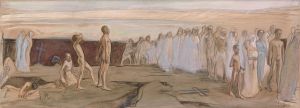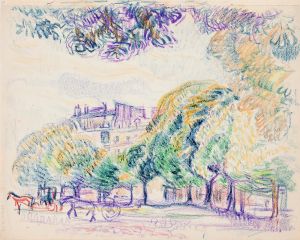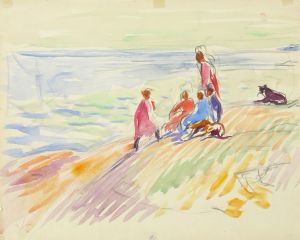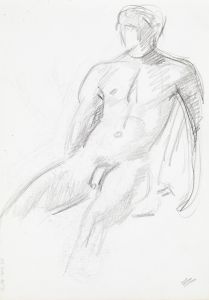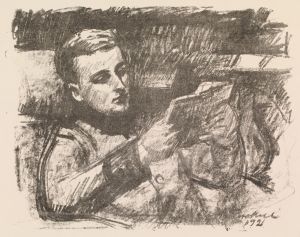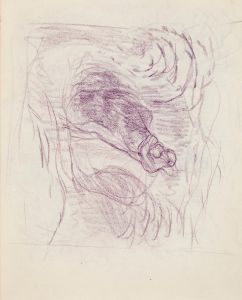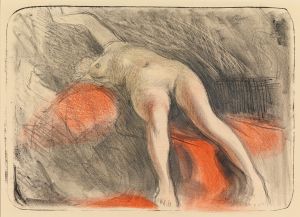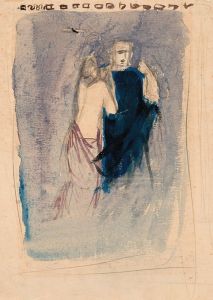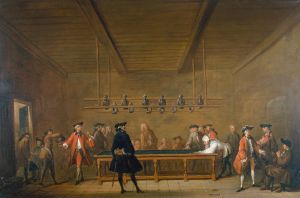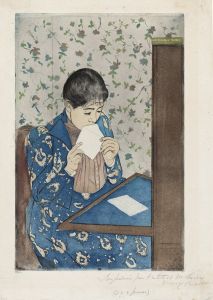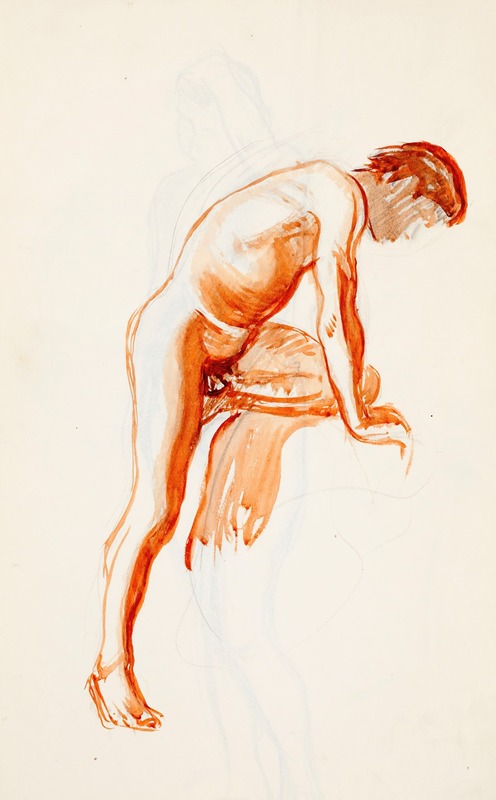
Alaston mies
A hand-painted replica of Magnus Enckell’s masterpiece Alaston mies, meticulously crafted by professional artists to capture the true essence of the original. Each piece is created with museum-quality canvas and rare mineral pigments, carefully painted by experienced artists with delicate brushstrokes and rich, layered colors to perfectly recreate the texture of the original artwork. Unlike machine-printed reproductions, this hand-painted version brings the painting to life, infused with the artist’s emotions and skill in every stroke. Whether for personal collection or home decoration, it instantly elevates the artistic atmosphere of any space.
Magnus Enckell's Alaston mies (translated as Nude Man) is a painting by the Finnish symbolist artist Magnus Enckell (1870–1925). Enckell is recognized as one of the most significant Finnish artists of the late 19th and early 20th centuries, particularly for his contributions to Symbolism and his role in the development of modern art in Finland.
Alaston mies is an example of Enckell's interest in the human form and his exploration of themes such as introspection, spirituality, and the idealized human body. The painting depicts a nude male figure, rendered with a focus on simplicity and clarity. The figure is often interpreted as embodying a sense of calm, contemplation, or vulnerability, which are recurring themes in Enckell's work. The artist's use of light, shadow, and muted tones in this piece reflects his Symbolist approach, emphasizing mood and emotion over detailed realism.
Enckell's work during the period when Alaston mies was created often featured solitary figures, frequently male, in meditative or dreamlike states. This focus on the male nude was relatively uncommon in Finnish art at the time and demonstrated Enckell's interest in classical ideals as well as his engagement with contemporary European art movements. His studies in Paris and exposure to Symbolist and Post-Impressionist artists influenced his style and thematic choices.
Magnus Enckell was also known for his openness to exploring themes of identity and human emotion, which has led to modern interpretations of his work as being ahead of its time in addressing issues of gender and sexuality. However, interpretations of Alaston mies should be grounded in the context of Symbolism and the broader artistic trends of the era.
The exact date of creation for Alaston mies is not definitively documented, but it is consistent with Enckell's mature Symbolist period, which spanned the late 1890s and early 1900s. The painting is part of Enckell's broader oeuvre, which includes both oil paintings and frescoes, and it reflects his mastery of form and composition.
Today, Alaston mies is considered an important work within Enckell's artistic legacy and Finnish art history. It exemplifies his ability to convey profound emotion and thought through minimalistic yet evocative imagery. The painting is housed in a Finnish art collection, though specific details about its current location or exhibition status may vary.





